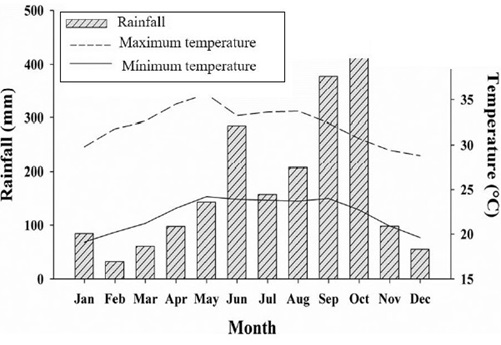Carbon Reservoirs in the Biomass and Soil in Livestock Systems with Scattered Trees in Pastures in the Humid Tropics of Mexico
DOI:
https://doi.org/10.28940/terra.v42i.1887Keywords:
environmental services, grasslands, native tree species, silvopastoral system, tabascoAbstract
Maintaining trees in grassland areas is an option for enhancing carbon stocks, yet the contribution of dispersed trees in pastures has been little studied in livestock systems in the humid tropics of Mexico, despite being one of the region’s most widely employed silvopastoral modalities. We conducted a study to assess biomass and soil carbon storage in a silvopastoral system, consisting of Brachiaria brizantha grass with native trees dispersed in paddocks (STP) and compared the findings with a pastureland consisting of Brachiaria decumbens grass without trees (WT). Five sampling plots of 1000 m2 size, were randomly selected for each livestock system (STP and WT). At each site, tree biomass was estimated by allometric equations, and herbaceous, litter biomass, and soil organic carbon at four dif ferent depths were quantified by direct sampling method. Of the total biomass in the STP, above-ground biomass contributed 57.3%, below-ground biomass 20%, and ground litter 22.7%. In the case of WT, above-ground biomass represented 40.9% of the total biomass, below-ground biomass 6.4%, and litter 52.7%. The STP system stored a total of 162.3 Mg C ha-1, of which 149.7 Mg C ha-1 in the soil to 70 cm depth and 12.7 Mg C ha-1 in the biomass. WT system stored a total of 116.6 Mg C ha-1, of which 110.7 Mg C ha-1 in the soil and 5.5 Mg C ha-1 in the biomass. It is concluded that the STP livestock system increased 28% of the total carbon storage compared to the WT. However, more studies with greater species diversity and at dif ferent densities are needed to understand better the contribution of trees to carbon accumulation in livestock systems.
Downloads
Publication Facts
Reviewer profiles N/A
Author statements
- Academic society
- Terra Latinoamericana
- Publisher
- Mexican Society of Soil Science, C.A.

















